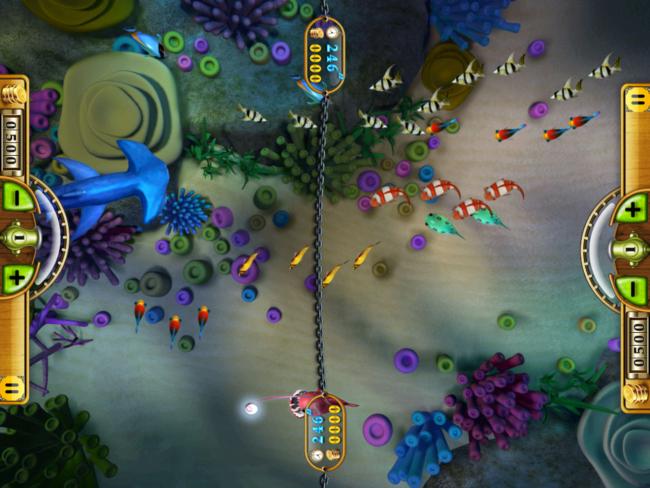- Wondering how to get Monopoly GO! free rolls? Well, you’ve come to the right place. In this guide, we provide you with a bunch of tips and tricks to get some free rolls for the hit new mobile game. We’ll …
Best Roblox Horror Games to Play Right Now – Updated Weekly
By Adele Wilson
Our Best Roblox Horror Games guide features the scariest and most creative experiences to play right now on the platform!The BEST Roblox Games of The Week – Games You Need To Play!
By Sho Roberts
Our feature shares our pick for the Best Roblox Games of the week! With our feature, we guarantee you'll find something new to play!All Grades in Type Soul – Each Race Explained
By Adele Wilson
Our All Grades in Type Soul guide lists every grade in the game for all races, including how to increase your grade quickly!
Creating Mobile Games for Players in China: What Works and Why
Fishing, even for the most experienced and skilled fisherman, is a sport that involves a lot of luck. You can go into it having done everything right – researching your fishing spot, showing up when the fish are active, bringing the best bait, buying top-of-the-line pole and tackle, and putting hours of practice into your casting and landing skills. In the end, however, a fish still needs to show up in the right place at the right time and decide to bite.

Fishing, even for the most experienced and skilled fisherman, is a sport that involves a lot of luck. You can go into it having done everything right – researching your fishing spot, showing up when the fish are active, bringing the best bait, buying top-of-the-line pole and tackle, and putting hours of practice into your casting and landing skills. In the end, however, a fish still needs to show up in the right place at the right time and decide to bite.
Mobile publishing, these days, is starting to feel a little bit like fishing. With mobile software, particularly games, finding worldwide acceptance, the marketplace is a very crowded ocean. Unlike fish, though, mobile gamers are a very finicky audience, so it’s not a matter of getting lucky anymore. Your game is one of hundreds that a player has available to choose from, which means you really do have to get everything right, putting your best foot forward with a game that will hook your audience right away. When a player comes to check out what you’re offering, if it’s not appealing, there’s nothing to stop them from moving right along to the next game.
So, when a game succeeds at an extreme level, like Fishing Joy did for us – being downloaded 70 million times in China, and another 15 million in other territories, it’s important to us to understand why, so our next fishing trip can be just as productive.
Chinese players gravitated toward a relaxing game atop random mechanics
The twist we put on traditional fishing gameplay in Fishing Joy, it turned out, made it an especially attractive title for gamers in our homeland. As mentioned earlier, there’s a lot of luck involved in fishing, but not necessarily in a way that translates well to a controlled, interactive medium like mobile gaming. When you strike out at fishing in the real world, it’s because the fish aren’t there, or because they choose not to bite, or because someone nearby is making noise. Concepts like these wouldn’t work well in a game; nobody wants to log in to their private digital fishing hole and be plagued by external, abstract problems. But, without the luck factor at work, fishing isn’t nearly as exciting. Finally landing the “big one” is meaningless unless it’s a rare occurrence; there needed to be some gradation of success in the game without annoying or confusing the player.
What we did, instead, was make the “luck” portion of the game both completely transparent, and an integral part of the fun. We added a slots-styled betting mechanic to the gameplay, giving the big payouts the same excitement as striking it rich in the casino. This turned out to be especially attractive to Chinese gamers, since there is actually little or no legalized wagering here. That rush of eternally hopeful anticipation that comes from randomness doesn’t appear in many outlets for Chinese players, so we found that people really took to it in Fishing Joy.
At the same time, we wanted to provide that giddy thrill without tying it to a difficult or high-energy activity. Life in China, particularly for young adults, is very fast-paced, hectic, and stressful. When people do find the time for leisure activities like mobile games, they’re typically trying to unwind, to cool down from an adrenaline rush rather than raise it again. Fishing is iconic for being a laid-back, low-stress activity, which made it the perfect match.
This led us to tremendous success with Fishing Joy in China, and a fairly high sales record in other countries, as well. When the time came to start work on Fishing Joy 2, therefore, the first thing we did was look at what gamers need and want in other parts of the world. Our goal was to release the sequel specifically outside of China, for audiences in North America and countries outside of China.
The desire to wind down with a mobile game is universal
We found that the need (and the desire) to relax during one’s leisure time was a rather universal factor in mobile audiences. People pick up their mobile devices to play a game when they’re commuting, or taking a break at the office, or from studying… any time they want to take time off from a task that’s generally stressful and is taking up all of their attention. A “lazy” activity like fishing fits the bill no matter where you are; it’s a routine that everybody understands and can easily slip into without needing to practice or go through any instruction.
The excitement of a potential luck-based win is present, too, but we discovered that in North America, for example, a big attraction in modern casual games is a sense of accomplishment. Uncertainty can be appealing in potential winnings, certainly, but gamers like to have more certainty when it comes to the overall progression of a game. Gamers like to know that their efforts are being acknowledged and rewarded, which is why we added so many more unlocks and pleasant surprises for leveling up, so players are always earning something new by playing the game.
Time will tell if Fishing Joy 2 picks up as large an audience as its predecessor, but, just like fishing, there’s always got to be adequate preparation if you want to get lucky. [1]
About the author: Lei Zhang is CocoaChina’s US general manager, driving the company’s cooperation with international developers.
About CocoaChina: CocoaChina originated from an iOS focused developer community. In addition to hosting the largest mobile developer community in China, Chukong, the parent company of CocoaChina, is also a game publisher under the brand name PunchBox Studios, with more than 90 million installs across iOS and Android.
More articles...
Monopoly GO! Free Rolls – Links For Free Dice
By Glen Fox
Wondering how to get Monopoly GO! free rolls? Well, you’ve come to the right place. In this guide, we provide you with a bunch of tips and tricks to get some free rolls for the hit new mobile game. We’ll …Best Roblox Horror Games to Play Right Now – Updated Weekly
By Adele Wilson
Our Best Roblox Horror Games guide features the scariest and most creative experiences to play right now on the platform!The BEST Roblox Games of The Week – Games You Need To Play!
By Sho Roberts
Our feature shares our pick for the Best Roblox Games of the week! With our feature, we guarantee you'll find something new to play!All Grades in Type Soul – Each Race Explained
By Adele Wilson
Our All Grades in Type Soul guide lists every grade in the game for all races, including how to increase your grade quickly!








 “
“